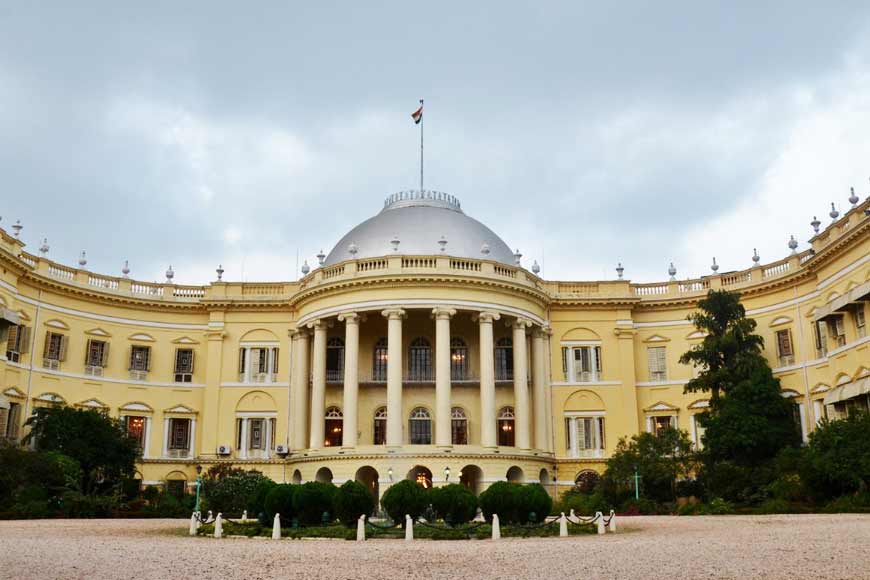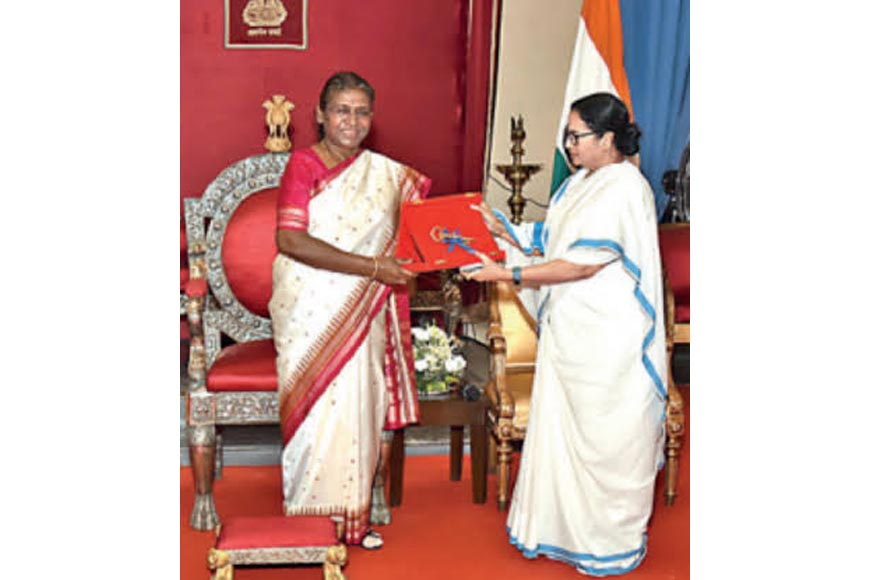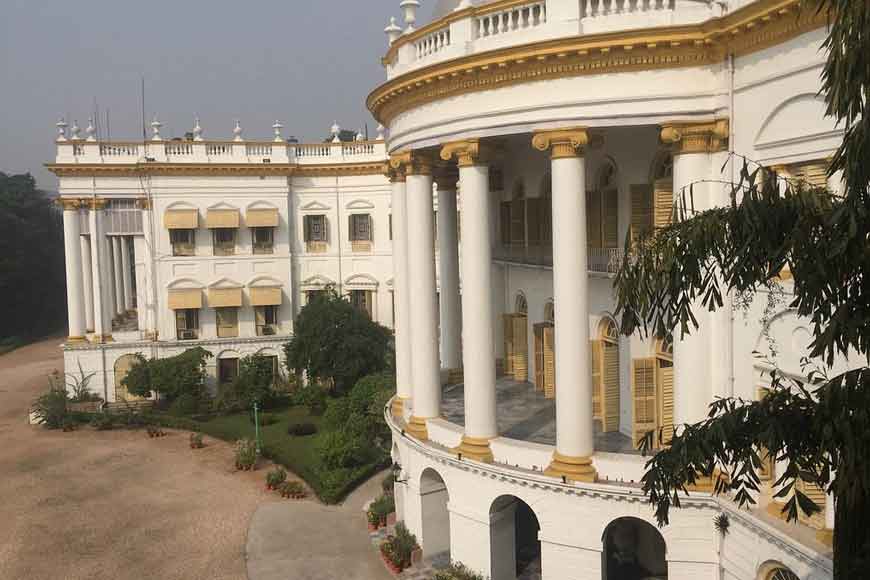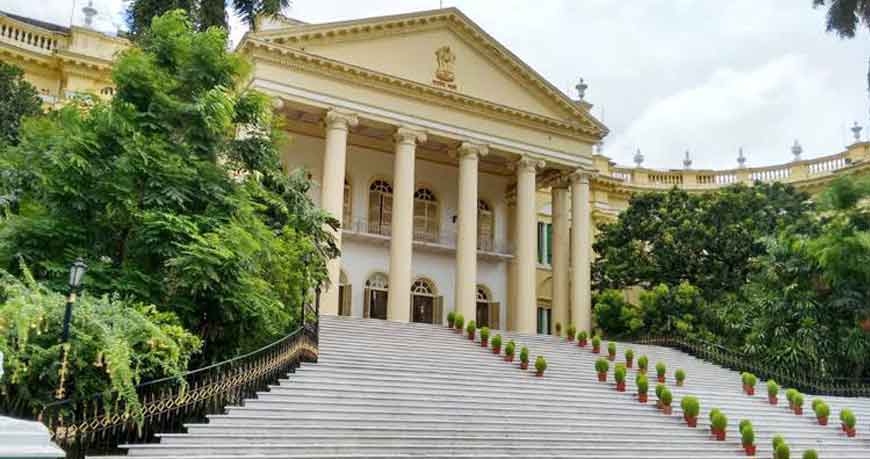Raj Bhavan all set to open to the public for heritage tours

History is all set to be created again on the floors and gardens of Kolkata’s Raj Bhavan this Bengali New Year or Poila Baisakh. In a historic move, the Raj Bhavan has decided to open its doors to the common people after Governor C V Ananda Bose handed over a symbolic key of the Raj Bhavan to President Droupadi Murmu. She was on her recent visit to Kolkata, and passed it on to Chief Minister Mamata Banerjee during a dinner hosted last week. As per the latest reports validated by some officials of Raj Bhavan who wished not to be named, the date of opening of the governor’s official residence for the common people and the daily timing might be around Poila Baisakh.

A heritage walk will also be organised on the premises of Raj Bhavan to give an idea about the rich history of the building as per a statement issued by the Raj Bhavan office. As per the statement: “Governor Bose hosted a dinner at the Raj Bhavan in honour of the President where the Chief Minister was also present. The President then handed over a symbolic key to her. The key signified the concept of Jan Raj Bhavan in place of Raj Bhavan being an exclusive seat of power as conceived by the colonialists. The Governor also presented a coffee table book — 100 Days & Beyond — to President Murmu to mark her maiden visit to West Bengal as the President. Thus the Raj Bhavan will soon turn into the People’s Raj Bhavan.
Built between 1799-1803 when Marquis Wellesley was the Governor General, the historic Raj Bhavan was designed on the lines of Kedleston Hall in Derbyshire, the ancestral house of Lord Curzon, who later lived here as the Viceroy and the Governor General exactly 100 years after Wellesley. The three-storeyed building with a magnificent central area consisting of large halls has curved corridors on all four sides with detached wings, each constituting a house in itself. The total area occupied by the Raj Bhavan is 27 acres with the building occupying 84000 sq ft of floor space. The residential suites are in the four corners of the second floor while the main suite — the Prince of Wales suite — used by visiting dignitaries is on the first floor in the North-West. On the ground floor, the central area is called the Marble Hall. The first-floor central area consists has the Throne Room, Banquet Hall, and Blue Drawing and Brown Dining Rooms. Though it is not clear if the visitors will get a peek into all these rooms, it is expected that they would be able to walk into many of these special rooms of Raj Bhavan.

On the first floor, at the northeast corner, is the Council Chamber, in which major government decisions were made during British rule. The second floor has the Governor’s apartments and the ballroom. Three oil paintings in Raj Bhavan, Kolkata, have been restored with assistance from Victoria Memorial Hall. The paintings include that of Rabindranath Tagore by Atul Bose which is displayed in the Governor’s study, and those of Marques of Hastings and Queen Alexandra in the ballroom of the Raj Bhavan, which was received back from the Victoria Memorial Hall. Besides heritage interests, tourists will also get to see a medicinal herbal garden that was set up later in Raj Bhavan.
During the two hundred years of its existence, Raj Bhavan experienced additions and alterations to its internal decorations, lighting, furniture and fixtures, landscaping of the lawns and gardens, as well as alterations to the suites to make the guests stay comfortable. Although no significant alteration to the structure of the main building has ever been attempted, continuous civil maintenance of the entire structure, carried out by the Raj Bhavan wing of the Public Works Department of the State Government, has helped in retaining the grandeur of this heritage building. Two Raj Bhavan edifices of equal architectural and heritage value, the Flagstaff House in Barrackpore and the Raj Bhavan in Darjeeling, are also benefiting from extensive renovation and repair works as well as restoration of their priceless artifacts, initiated recently.

The facility to accommodate visiting dignitaries at the Kolkata Raj Bhavan was augmented in 2009 by converting a ground-floor wing into a Suite, thus increasing the number of suites to 5. A roof-top rainwater harvesting facility has been installed in the Raj Bhavan in 2006 to recharge groundwater. A Medicinal Herbal Garden was also set up. In the Ball Room, exquisite specimens of Kantha stitch paintings, executed by rural women have been displayed. The Blue Drawing Room and some other suites have recently been equipped with specimens of Dokra art and silk weaving in the Baluchari style. New portrait paintings were commissioned of Sri Aurobindo, Netaji Subhas Chandra Bose, Sarojini Naidu, and Satish Chandra Dasgupta by Professor Isha Mohammad. A new painting of Bahadur Shah Zafar by Wasim Kapoor has been installed.
Maintenance of heritage properties of this magnitude requires ceaseless and untiring work, imagination, and creativity. In 2009, Raj Bhavan saw a thorough restoration of its exterior as different from the contemporary use of cement. It was done with lime plastering. This was carried out by the engineers of the Raj Bhavan with the advice of the West Bengal Heritage Commission during the course of action. And now it is all set to open for public viewing, turning it into the People’s Raj Bhavan.











